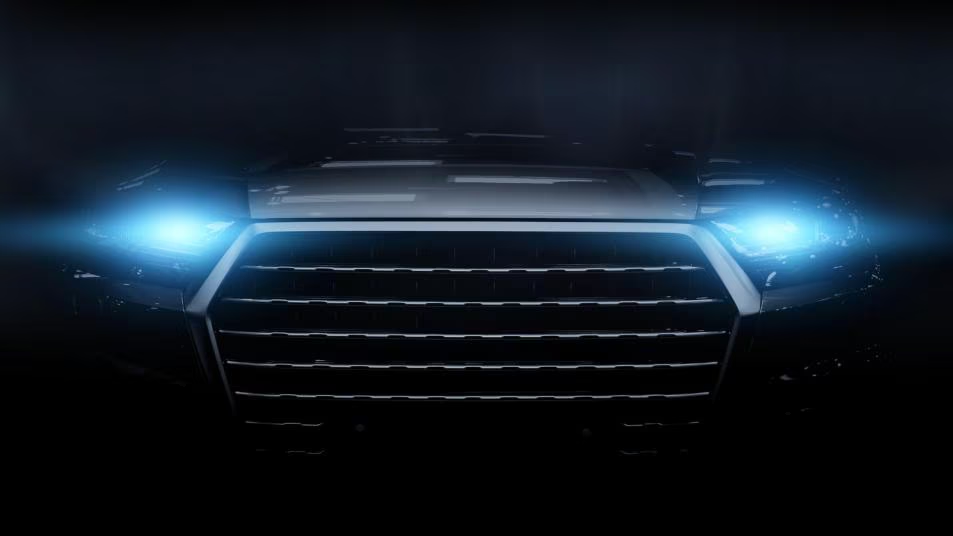What Every Driver Should Know About Headlight Maintenance and Upgrades
Your vehicle’s headlights are among the most critical safety features. They ensure visibility at night, in fog, or during bad weather conditions, keeping you and others on the road safe.
Over time, headlights can degrade, leading to reduced performance, unsafe driving conditions, and even legal issues. Understanding headlight maintenance and potential upgrades is essential for every driver, especially if you want to keep your lights working effectively and looking great.
This guide will walk you through everything you need to know about maintaining and upgrading your headlights.

Table of Contents
Why Headlight Maintenance is Crucial
Safety First
Headlights are essential for nighttime and low-visibility driving. A dim or cracked headlight can impair your visibility and make it harder for other drivers to see you. This increases the risk of accidents, especially on poorly lit roads or highways. Proper headlight maintenance ensures that you always have the best possible illumination and that you comply with legal requirements.
Preventing Further Damage
Neglecting your headlights can lead to bigger, more costly problems. Dirty, cloudy, or scratched lenses can block the light output, which reduces brightness and affects the overall efficiency of the headlights. If left unchecked, this can cause damage to the bulb or the wiring, resulting in a more expensive repair down the line.
Legal Compliance
In many regions, vehicle regulations require headlights to meet specific brightness standards. Driving with faulty headlights can result in fines or even cause issues when registering your vehicle. Regular maintenance helps you stay compliant and avoid penalties.
How to Maintain Your Headlights
Proper maintenance is key to prolonging the life of your headlights and ensuring they perform at their best. Here are some important tips on how to care for them:
Regular Cleaning
Dirt and grime can build up on your headlights, affecting their performance. Regular cleaning ensures maximum brightness.
- How to Clean: Use a gentle soap and water solution or a special cleaner designed for headlights. Avoid abrasive cloths or harsh chemicals, as they can scratch the surface.
- Restoring Clarity: For cloudy lenses, use a special headlight restoration kit. These kits typically include a polish that helps remove oxidation and restore clarity.
Inspect for Damage
Check your headlights regularly for signs of wear. Look for cracks, fogging, or water buildup inside the lens. These issues can indicate that moisture has gotten into the assembly, which can damage the bulb or electrical components.
- Cracked Lenses: If the lens is cracked, the headlight should be replaced to prevent further damage and ensure a proper seal.
- Fogging Inside the Housing: Fog or condensation inside the lens indicates a sealed connection problem, which could lead to water damage and reduced light output.
Adjusting the Headlight Angle
Misaligned headlights can cause problems for both you and other drivers. If your headlights are pointing too high or low, you might be driving with insufficient light or blinding other drivers.
- Check Alignment: Check the alignment using a wall or garage door. Measure the distance between the floor and the light beam. The beam should be slightly lower than the center of the lens to avoid dazzling other drivers.
- Adjusting: Some vehicles allow manual adjustments, but for others, you may need a professional to align them correctly.
Upgrading Your Headlights for Better Performance
If you’re looking to improve your headlight performance or update the look of your vehicle, upgrading your headlights is a great option. There are several upgrades to consider, depending on your needs and preferences.
Upgrading to LED or HID Headlights
Traditional halogen bulbs are the standard, but LED (Light Emitting Diode) and HID (High-Intensity Discharge) lights offer significant improvements.
- LED Lights: These lights are energy-efficient, provide brighter illumination, and have a longer lifespan than traditional halogen bulbs. They also offer a modern, sleek look.
- HID Lights: HID headlights provide extremely bright, white light, which enhances visibility in the dark. They are particularly useful for driving in rural areas with limited street lighting.
Pros of LED/HID Upgrades:
- Enhanced brightness and clarity
- Longer lifespan
- More energy-efficient
- Improved aesthetics and modern look
Cons of LED/HID Upgrades:
- Higher initial cost
- May require special installation or housing
- Some models may not be legal in all areas (check local regulations)
Upgrading to Xenon Headlights
Xenon headlights are another upgrade option. These provide a high-intensity white light that is closer to natural daylight. Xenon headlights are typically more expensive than halogen lights but can significantly improve road visibility and aesthetics.
Custom Headlight Assemblies
If you’re looking for something truly unique, consider upgrading to custom headlight assemblies. These can include features like colored halos, LED strips, or projector lenses for enhanced brightness and style.
Benefits:
- Unique, personalized look
- Higher visibility with projector-style lights
- Can include additional features like DRLs (Daytime Running Lights) or turn signal integration
Considerations:
- Installation complexity
- Cost of custom parts and labor
- May require electrical adjustments or reprogramming
Signs It’s Time to Replace Your Headlights
Even with the best maintenance, headlights will eventually need replacement. Here are some signs that it’s time to replace your headlights:
Dim Light Output
If your headlights seem dimmer than before, even after cleaning and polishing the lenses, the bulb itself might be losing its effectiveness. Bulbs typically degrade over time, and it’s best to replace them when their brightness diminishes.
Flickering or Uneven Light
Flickering or uneven light from your headlights often indicates that the bulb is failing or the wiring is loose or damaged. Replacing the bulb or repairing the electrical connection can resolve the issue.
Yellowing or Cloudy Lenses
Cloudy or yellowed headlights can reduce light output and visibility, especially at night. While restoration kits can help, if the damage is too severe, replacing the lenses may be necessary.
Headlight Maintenance Tips for Different Seasons
Winter:
- Keep your headlights clear of snow and ice to maintain visibility.
- Use headlight covers or wax to prevent build-up from road salt and grime.
Summer:
- Check for condensation inside the headlight lenses, as high heat can cause moisture buildup.
- Clean regularly to avoid bug splatter and dirt accumulation.
Final Thoughts
Headlight maintenance is an essential but often overlooked aspect of vehicle care. Regular cleaning, proper alignment, and timely upgrades can significantly enhance your driving experience and safety. Whether you’re looking to keep your headlights working at peak performance or want to upgrade to modern LED or HID systems, these tips ensure that your vehicle’s headlights are in optimal condition.
For more expert automotive tips, product reviews, and maintenance guides, visit GetNew.blog and stay up to date with the latest in automotive technology and trends.
Sources and Inspirations
This article was inspired by automotive care best practices, expert reviews from leading manufacturers, and insights from car enthusiasts across the industry. Key sources include leading automotive brands, repair manuals, and vehicle maintenance experts.
